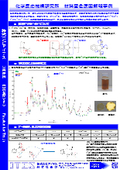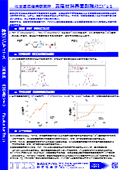[Data] IR analysis of vinyl polymers (resin materials)
Introducing the results of IR analysis conducted on polystyrene, polyvinyl chloride (PVC), and others!
There are many types of vinyl polymers, and they exhibit various properties depending on the molecular structure of their side chains. Additionally, differences in crystallinity arise from the bonding configuration of these side chains (stereoisomers). In this document, we present the results of IR analysis of representative vinyl polymers, including polyethylene, polypropylene, polystyrene, and polyvinyl chloride (PVC). Aites conducts advanced data analysis based on chemical theory, ensuring that even subtle differences are not overlooked. Please feel free to consult us at any time. 【Contents】 ■ Analysis Sample: Vinyl Polymers ■ IR Spectrum (ATR Method) ■ IR Spectrum Comparison (Overlay) *For more details, please refer to the PDF document or feel free to contact us.
basic information
【Publication Analysis Sample】 ■Polyethylene ■Polypropylene ■Polystyrene ■Polyvinyl Chloride (PVC) *For more details, please refer to the PDF document or feel free to contact us.
Price range
Delivery Time
Applications/Examples of results
For more details, please refer to the PDF document or feel free to contact us.
catalog(47)
Download All Catalogs



News about this product(2)
-

Introduction to Micro FT-IR
At Aites Co., Ltd., we have newly introduced "Microscopic FT-IR" this fiscal year. The "Microscopic FT-IR," which combines FT-IR and optical microscopy, allows for the measurement of tiny substances on the order of several tens of micrometers, which are difficult to measure with conventional FT-IR, using an aperture (field of view diaphragm). There are three main measurement methods for Microscopic FT-IR: "transmission method," "reflection method," and "ATR method." While the transmission method is the basic measurement method in Microscopic FT-IR measurements, the reflection method or ATR method may be more suitable depending on the shape of the sample and the feasibility of sampling.
-

Chemical Analysis Concierge Service
We would like to introduce our "Chemical Analysis - Trust Us Service." When conducting component analysis of foreign substances or stains on products, it can be challenging to determine whether organic analysis or inorganic analysis is more suitable, and which specific analysis within organic or inorganic is the most appropriate. We provide a comprehensive service for customers who are struggling with the selection of analysis methods. Since each analysis device can measure different targets, it is necessary to choose a method that fits the purpose based on the information available.
Recommended products
Distributors
Aites was established in 1993, originating from the quality assurance department of the IBM Japan Yasu office. Based on the technical expertise cultivated through cutting-edge defect analysis and reliability assurance of electronic components at the IBM Japan Yasu office, we have provided various products and services that support the development and manufacturing of semiconductors, displays, organic EL, solar cells, and electronic components to customers both domestically and internationally.

































































































